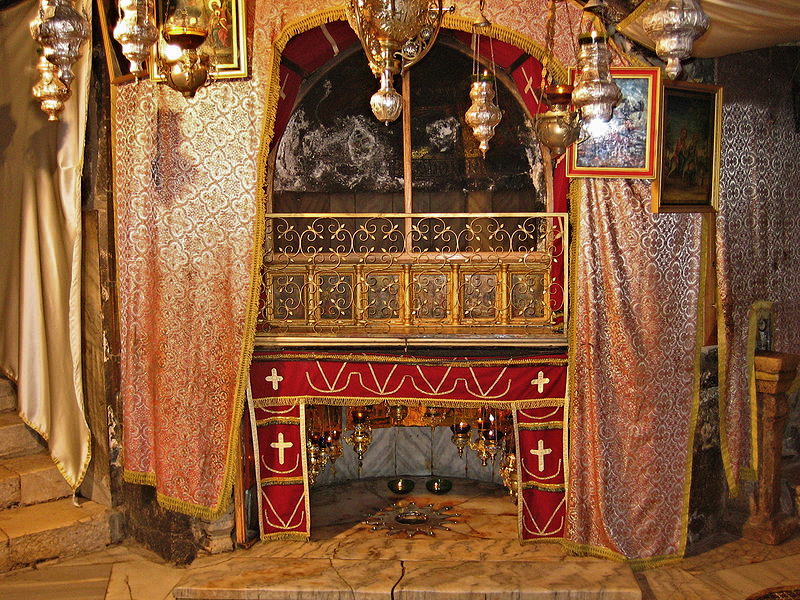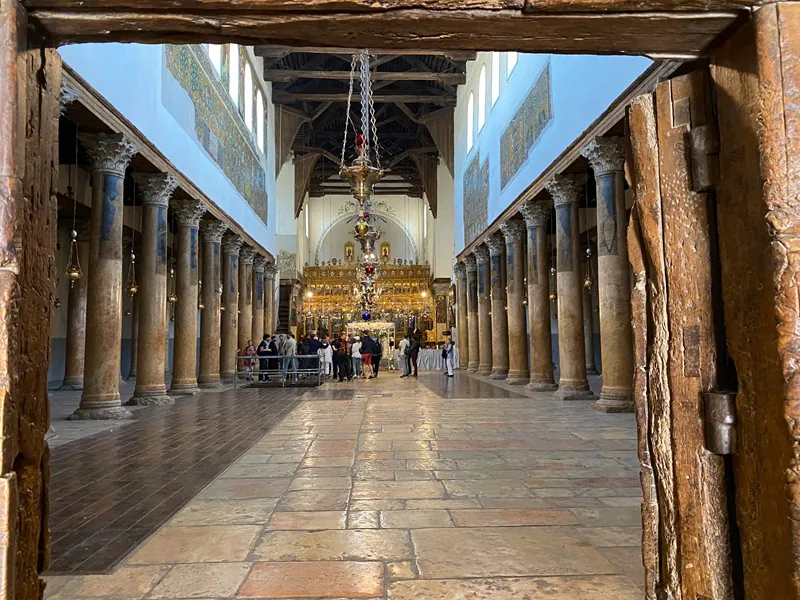Nestled in the heart of Bethlehem, just a few kilometers south of Jerusalem, the Church of the Nativity stands as one of the most revered and historically significant sites in the Christian world. Celebrated as the birthplace of Jesus Christ, this sacred church has drawn pilgrims, travelers, and historians for centuries. Its significance transcends religious devotion, representing a remarkable convergence of faith, art, architecture, and history. Visiting the Church of the Nativity offers a profound journey into the spiritual and cultural heritage of one of the world’s most iconic cities.
Whether you are a believer seeking spiritual reflection, a history enthusiast eager to explore ancient architecture, or a traveler intrigued by the stories of the past, the Church of the Nativity provides a unique and unforgettable experience.

Historical Background
The Church of the Nativity is one of the oldest continuously operating churches in the world. Its origins date back to the 4th century when Emperor Constantine the Great and his mother, Saint Helena, commissioned the construction of a basilica over the site traditionally recognized as Jesus’ birthplace. This decision reflected the growing importance of Christian pilgrimage sites following the legalization of Christianity in the Roman Empire.
The original basilica was completed around 339 CE and became a focal point for pilgrims from across the Roman Empire. Despite the passage of centuries, periods of destruction, and renovations, the church has remained a central symbol of Christian faith. Throughout its history, the church has been under the stewardship of various Christian denominations, primarily the Greek Orthodox, Armenian Apostolic, and Roman Catholic churches, reflecting the rich tapestry of Christian traditions that converge in Bethlehem.
Architectural Highlights
The Church of the Nativity is renowned for its distinct architectural features, which reflect centuries of religious devotion, artistry, and historical layers. The original 4th-century basilica followed a Roman architectural style, characterized by a rectangular layout, columns, and a central nave. Over the centuries, Crusader, Byzantine, and later renovations have added to its architectural richness, creating a blend of styles that tell the story of its enduring legacy.
One of the most striking features of the church is its mosaic floors, which date back to the Byzantine period. These intricate mosaics depict geometric patterns, animals, and symbolic motifs, reflecting the artistic skill and spiritual symbolism of early Christian craftsmen. The star marking the birthplace of Jesus, located in the Grotto of the Nativity beneath the church, is perhaps the most iconic symbol of the site. Pilgrims descend a narrow staircase to reach the grotto, where a silver star embedded in the marble floor marks the exact location traditionally believed to be the birthplace of Christ.
The church also houses ancient columns, chapels, and icons, each representing a different era and tradition within Christianity. The interplay of light and shadow, combined with the reverent atmosphere, creates a profound sense of connection to centuries of worshippers who have visited the site.
Religious Significance
The Church of the Nativity is at the heart of Christian pilgrimage, particularly during the Christmas season. Millions of pilgrims visit Bethlehem each year to celebrate the birth of Jesus, making the church a central hub of spiritual devotion and communal celebration. Manger Square, located just outside the church, comes alive during this period with processions, prayers, and festivities, attracting visitors from around the world.
Beyond Christmas, the church remains a site of daily worship and reflection. The Greek Orthodox, Armenian, and Roman Catholic communities maintain regular services, each contributing to the spiritual life of the church and the city. For believers, visiting the Church of the Nativity is a profound act of faith, connecting them to the historical and spiritual roots of Christianity.
The Grotto of the Nativity, where Jesus is believed to have been born, is the focal point of devotion. Pilgrims often kneel or pray at the silver star, leaving candles, prayers, and offerings. The experience is deeply moving, providing a tangible link to the biblical narrative that has inspired millions over millennia.
Cultural and Artistic Treasures
Beyond its religious significance, the Church of the Nativity is a treasure trove of art and culture. Its mosaics, frescoes, icons, and religious artifacts provide insight into the spiritual and artistic traditions of the region. The church’s apse mosaics, depicting scenes from the life of Christ and symbolic motifs such as the Magi and shepherds, date back to the Byzantine period and have been meticulously preserved.
The church also reflects the cultural diversity of its custodians. The Armenian Apostolic Church, for instance, contributes unique iconography and inscriptions, while the Greek Orthodox and Roman Catholic communities maintain chapels and liturgical spaces that reflect their own traditions. This diversity makes the Church of the Nativity not only a religious site but also a living museum of Christian art and heritage.
Visiting the church allows travelers to explore centuries of artistic expression and religious devotion, from intricate carvings to symbolic imagery that conveys theological messages through visual storytelling. Every column, fresco, and mosaic tells a story, offering a rich, immersive experience that combines history, art, and spirituality.
Pilgrimage Experience
For many visitors, the Church of the Nativity is not just a destination—it is a pilgrimage that engages the senses and the spirit. The experience begins at Manger Square, where pilgrims enter the church through a low, narrow door known as the “Door of Humility.” This small entrance requires visitors to bow as they enter, symbolically encouraging humility and reverence.
Inside, the atmosphere is serene, punctuated by the flicker of candles, the scent of incense, and the soft chants of worshippers. Descending to the Grotto of the Nativity, visitors often pause to reflect, pray, or simply take in the historical and spiritual significance of the site. The experience is deeply personal, yet shared with countless pilgrims from across the globe, creating a sense of communal reverence.
Guided tours enhance the visit by providing historical context, explaining the symbolism of the mosaics, and recounting the church’s storied past. For those traveling independently, informational plaques and signage offer insights into the architectural features, religious rituals, and historical events associated with the church.
Preservation and UNESCO Recognition
In recognition of its historical, cultural, and religious significance, the Church of the Nativity was designated a UNESCO World Heritage Site in 2012. This designation highlights the importance of preserving the church’s architecture, mosaics, and religious artifacts for future generations.
Preservation efforts are ongoing, involving careful restoration of mosaics, structural reinforcement, and conservation of ancient icons and frescoes. These initiatives ensure that the church remains a safe and inspiring destination for visitors while maintaining its historical authenticity and spiritual integrity.
UNESCO recognition has also helped raise global awareness about the church’s significance and has encouraged international cooperation in preserving this sacred site. For travelers, it adds another layer of appreciation, highlighting the church’s universal value beyond its religious role.
Visiting the Church of the Nativity
Bethlehem and the Church of the Nativity are easily accessible from Jerusalem, with public transportation and guided tours available. Visitors are advised to allocate several hours to fully explore the church, the grotto, and the surrounding area, including Manger Square and nearby historical sites.
Practical tips for visiting include:
- Dress Modestly: As a sacred site, visitors should wear clothing that respects local customs.
- Arrive Early: To avoid crowds, particularly during peak pilgrimage seasons like Christmas.
- Hire a Guide: For deeper understanding of the history, architecture, and religious significance.
- Respect Religious Practices: Maintain quiet in worship areas and follow instructions from custodians.
- Explore Nearby Attractions: Including Shepherds’ Fields, local markets, and historical landmarks in Bethlehem.
Why the Church of the Nativity Matters
The Church of the Nativity is more than a building—it is a living testament to faith, history, and human devotion. It connects the biblical past with the present, offering visitors a tangible link to stories that have shaped the spiritual and cultural landscape of the world.
Its enduring significance lies in its ability to inspire awe, reflection, and reverence. For pilgrims, it is a sacred site where prayer and contemplation converge with centuries of tradition. For historians and travelers, it is an architectural and artistic masterpiece that tells the story of human ingenuity, devotion, and resilience.
Visiting the Church of the Nativity is an opportunity to step into history, witness living faith, and experience a city that has been at the heart of religious devotion for millennia.
Conclusion
The Church of the Nativity in Bethlehem is a symbol of faith, culture, and history that continues to inspire and captivate millions of visitors each year. From its ancient mosaics and grotto to its architectural splendor and spiritual significance, it is a site that transcends time and borders.
Whether you are visiting for religious devotion, historical curiosity, or cultural exploration, the Church of the Nativity offers a profound and unforgettable experience. It is a place where stories come alive, where the past meets the present, and where the spirit of Bethlehem continues to shine brightly for all who come to witness it.
For anyone traveling to the Holy Land, the Church of the Nativity is not just a destination—it is a journey into the heart of history, faith, and enduring human heritage.

